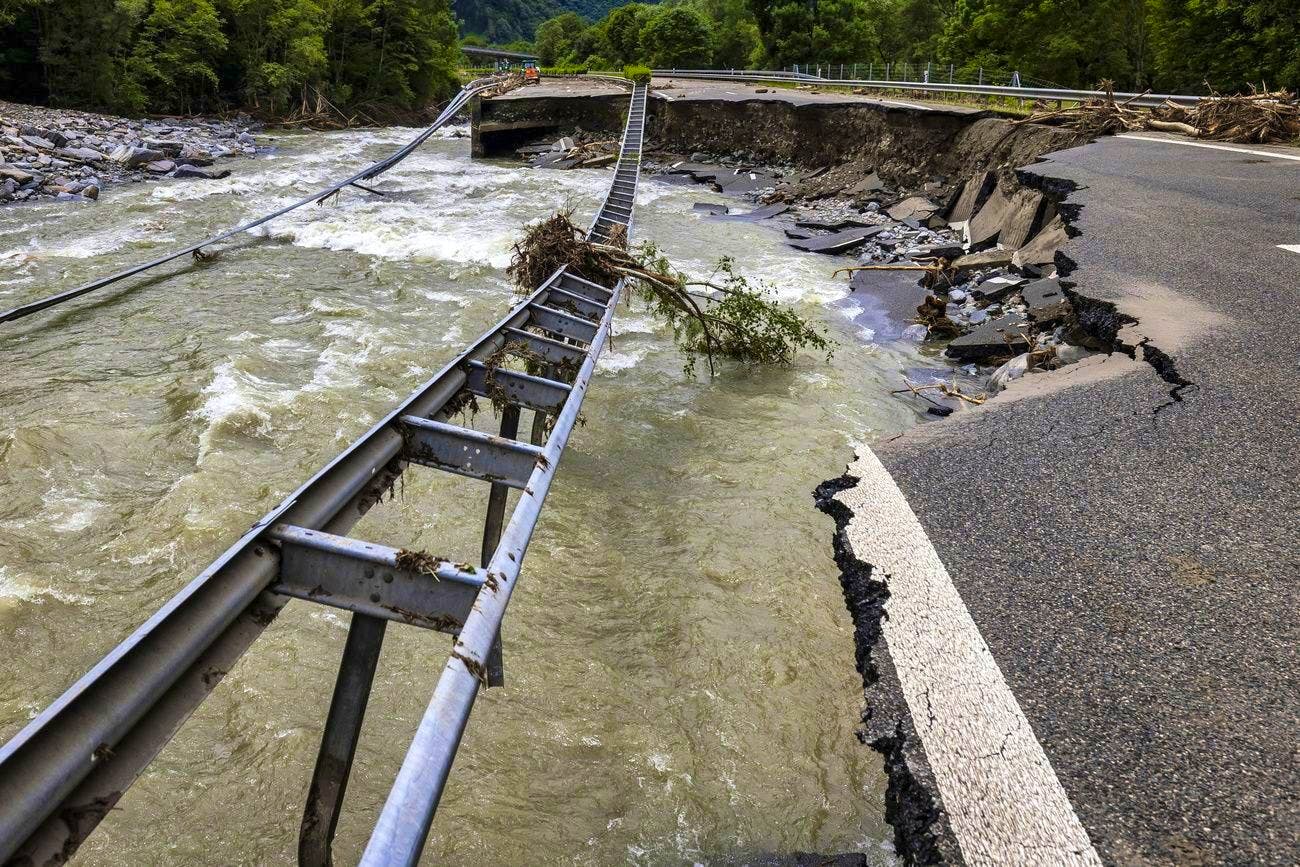Questions and answers Will the Misox now remain closed?
dpa
24.6.2024 - 17:57
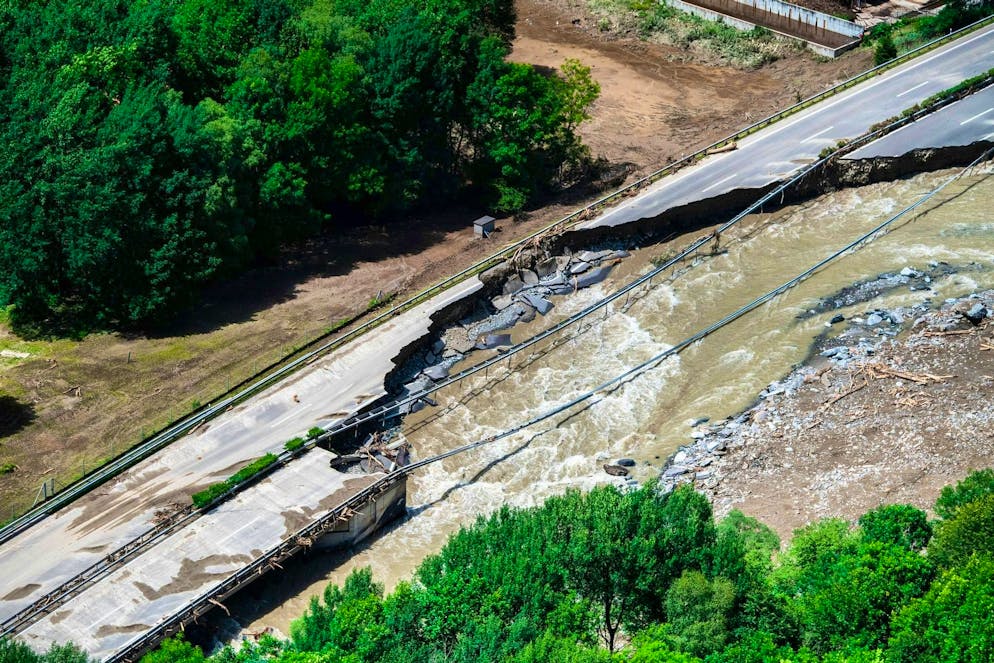
Heavy thunderstorms caused severe destruction in Switzerland. Zermatt was temporarily cut off from the outside world. One person in Misox could only be rescued dead, two others are still missing.
No time? blue News summarizes for you
- The weekend brought considerable storm damage to Switzerland, particularly in the southern Graubünden valley of Mis ox and in Valais, where there were floods, mudslides and debris and mudslides.
- One man was found dead in Graubünden. Two other people are missing. A woman who was rescued alive after a debris flow was able to leave the intensive care unit.
- Parts of the A13 highway near Lostallo were swept away by the Moesa River.
- The Federal Roads Office expects the A13 to be partially passable again in about a month. The cantonal road between Mesocco and Lostallo will remain completely closed to transit and through traffic for at least a week.
- Visitors to Zermatt will have to park their cars in Täsch and continue the last five kilometers by train. For rail travelers, replacement buses are running between Visp and Täsch for the time being because the railroad line has been damaged.
Affected regions
What did the storms do in Switzerland?
The severe weather at the weekend caused considerable damage in Switzerland, particularly in the Misox region of Graubünden and in Valais, where floods, debris flows, landslides and mudslides occurred. The River Moesa burst its banks and swept away parts of the A13 highway, causing considerable traffic problems.
What is the current flood situation?
The situation has now calmed down in many regions of Switzerland. However, the flood warning for Lake Constance remains at the second-highest risk level. There is also considerable danger for the Rhine from Lake Constance to the mouth of the Thur. According to the Federal Office for the Environment, there is a moderate flood risk for Lake Walen, Lake Lucerne, Lake Brienz and Lake Geneva.
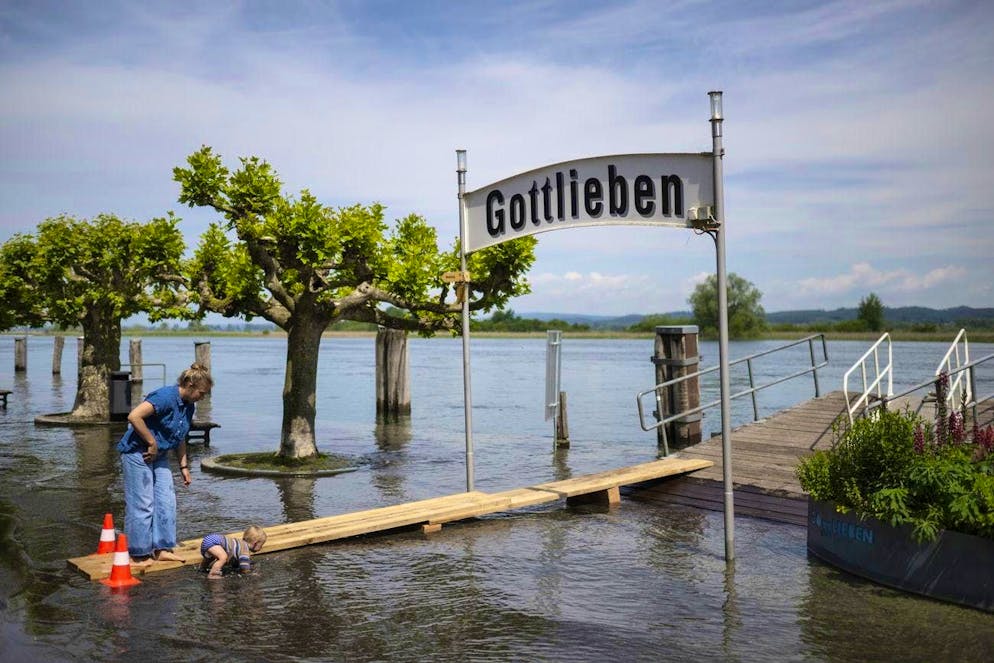
Which regions are most affected?
On Friday evening, massive thunderstorms and rainfall in Misox led to a debris and mudslide. This destroyed a section of the A13 highway near Lostallo. Rivers burst their banks and roads were flooded and had to be closed. Several dozen residents in the Misox / Calanca region had to be evacuated from their homes on Friday, but most of them were able to return to their homes on Saturday morning.
The car-free village of Zermatt in the canton of Valais was also hit by heavy rainfall, which cut the village off from the outside world for more than 24 hours. Streams burst their banks and thundered past the houses into the valley. However, residents and vacation guests were safe the whole time, the municipality explained. The railroad line from Visp to Zermatt was partially damaged and closed. Trains only ran again on the last few kilometers from Täsch from Saturday evening. Buses ran as a replacement.
There was also the threat of major flooding on the Rhone before it entered Lake Geneva on Friday evening. Due to the heavy rainfall in the mountains, there were isolated cases of debris flows on the tributaries. However, the authorities lifted their alert on Sunday after the rainfall subsided.
Why exactly did debris flows and rockfalls occur in the Misox?
According to Simon Eschle from SRF Meteo, the reasons for the affected regions are difficult to determine precisely. Although it was known that the southern side of the Alps would be affected by tricky weather conditions, the exact path of the thunderstorms was difficult to predict. The intense rainfall and the steep terrain in the southern Graubünden valley caused mountain streams to overflow, which ultimately led to debris flows.
Are there any fatalities, missing or injured?
On Sunday morning, emergency services in the canton of Graubünden recovered a man dead in the River Moesa between Lostallo and Roveredo in the Misox. Two other people are currently missing in the catchment area. Early on Saturday morning, a woman was rescued alive in a debris trap in Lostallo GR after a mudslide destroyed several houses in Sorte GR. She has since been discharged from intensive care.
How will the weather develop in the coming days?
On Sunday and Monday morning, the weather in Switzerland was much friendlier. Temperatures rose to 25 degrees in the north and 27 degrees in the south. Nevertheless, thunderstorms are again forecast for Monday evening in the region around Lake Geneva, in Valais and in Ticino. According to MeteoNews, the precipitation is expected to continue until Wednesday.
What is the longer-term weather forecast?
The forecast for the beginning of July also remains changeable. A flat pressure distribution with an occasional humid westerly flow is still on the cards. This means that although it will be partly sunny, showers or thunderstorms are possible throughout the day. Maximum temperatures will be between 20 and 26 degrees. A stable area of high pressure is still not in sight. Therefore, heavy rain events such as the one in Misox must still be expected in the mountains.
Information for (vacation) travelers and residents
As an affected person, where can I get up-to-date information on the situation in the Misox?
The emergency services and the local municipal authorities have set up a hotline (+41 (0)81 552 04 30) for residents of the Misox.
Where can I get official information and warnings about storms?
Weather services such as MeteoNews mention in the text forecasts when severe thunderstorms are possible. Warnings are then automatically issued for regions in the path of the thunderstorm cells. MeteoSwiss also issues warnings in advance of thunderstorms and sends app users warnings when a severe thunderstorm is actually approaching. The Alertswiss app from the federal government is also recommended.
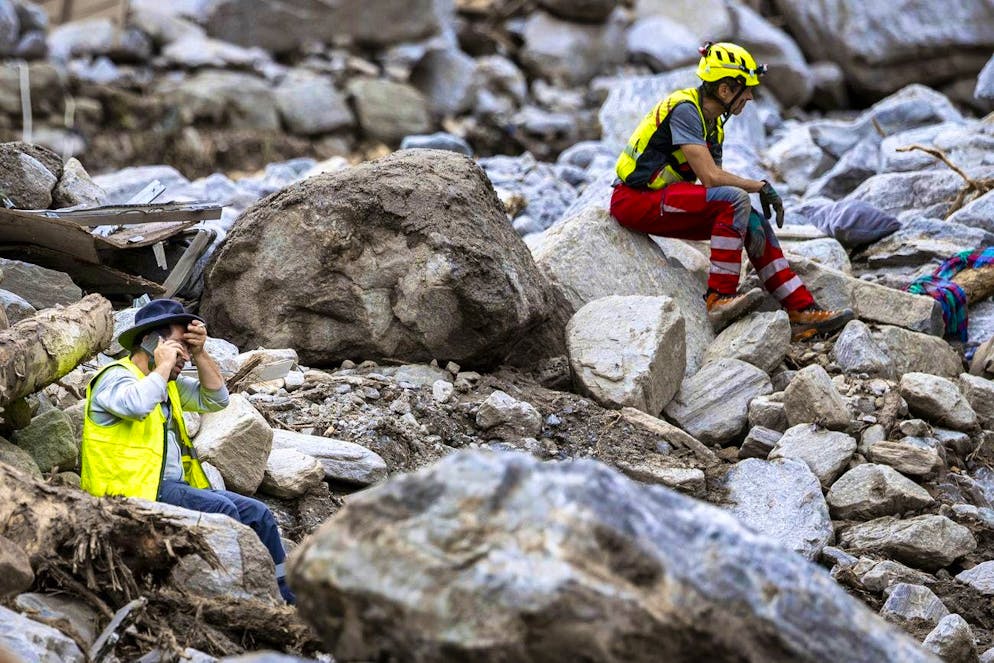
How is the storm affecting north-south traffic?
On the A13 freeway through the Misox, the first repair work has begun on the 200-metre stretch of road destroyed by the storm. The Federal Roads Office (Astra) assumes that, given favorable weather conditions, the A13 will be partially open to traffic again in about a month.
The A13 is an important alternative route for vacation traffic over the San Bernardino Pass in the direction of Italy when the Gotthard tunnel is overloaded. As long as the A13 near Lostallo GR is closed, there will be additional traffic on the alternative routes through or over the Alps. In western Switzerland and for the region, the route via the Lötschberg car transporter and the Simplon Pass is recommended for the journey south. Other alternative routes are: Gotthard Pass, Oberalp Pass and Lukmanier Pass, Splügen Pass, Maloja Pass and Bernina Pass.
When will the cantonal road in the Misox be open to everyone again?
The cantonal civil engineering office of the canton of Graubünden has announced that the cantonal road between Lostallo and Mesocco was reopened in both directions from Sunday evening at 10 p.m., but only for residents, feeder traffic and public transport. Unauthorized vehicles will be turned away at the checkpoints in Thusis, Hinterrhein and Lostallo.
The cantonal road between Mesocco and Lostallo will remain completely closed to transit and through traffic for at least a week in order to carry out clean-up work. Traffic will be diverted in the north at Thusis Süd and Hinterrhein and in the south at Lostallo. The A13 will remain open in both directions from Bellinzona to Lostallo.
Is public transport working again?
Public transport through the Misox has been running again since Monday morning at 5 a.m. on the route from Thusis to Lostallo and from there on the A13 southbound, but delays to Postbus services are to be expected. Due to the current situation in the Misox region, short-term safety measures are also possible.
Can I move freely in the Misox region?
Due to the massive damage in the region, the Graubünden authorities are urging the population not to enter the damaged areas, to avoid unnecessary journeys with vehicles and thus not to hinder the clean-up work.
How do I get to Zermatt?
Visitors to Zermatt must park their cars in Täsch and travel the last five kilometers by train. The Zermatt-Täsch railroad line was reopened on Saturday evening so that those arriving by car could get to their vehicles.
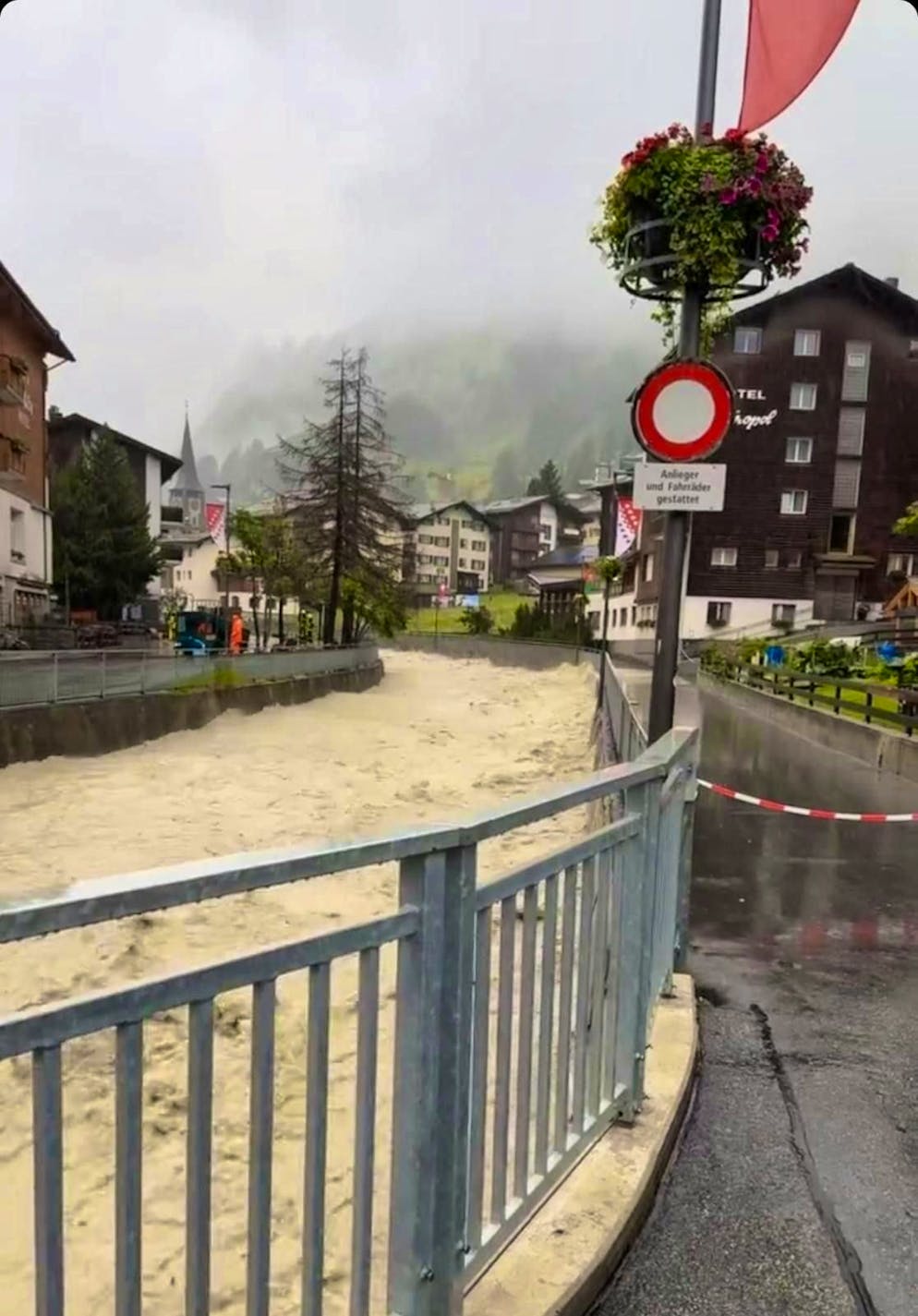
The road into the Rhone Valley was clear. For rail travelers, the journey remains difficult: for the time being, only buses were running between Visp and Täsch because the railroad line had been damaged. The Matterhorn-Gotthard Railway warned on the short message service X of waiting times in Visp and Täsch.
Causes of severe weather
What is the cause of the current storms in Switzerland?
Last Friday, an area of low pressure moved from France to Germany, bringing a cold front to Switzerland. In addition, a partial trough moved across the country. The air masses were very humid and unstable, creating a considerable potential for severe thunderstorms.
Are severe storms the new normal due to climate change?
According to Geraldine Zollinger from MeteoNews, it is not possible to make any robust statements about long-term trends because the series of measurements for thunderstorm events is still too short. However, heavy precipitation has increased in frequency and intensity, which can be attributed to climate change.
What should I do if I get caught in a thunderstorm?
First seek shelter in a building or at least in a car. Avoid basements, as these could be flooded. If you are outdoors, it is best to make yourself small by crouching down and keeping your feet together. Lightning can strike the ground and spread. To prevent the lightning from passing through your body, minimize contact with the ground. Also avoid individual trees or masts, as these are preferred targets for lightning strikes.


